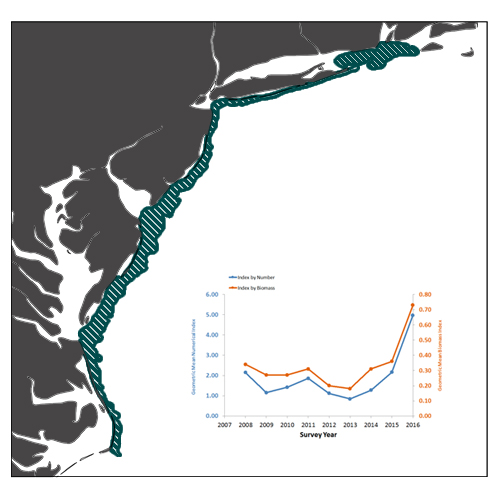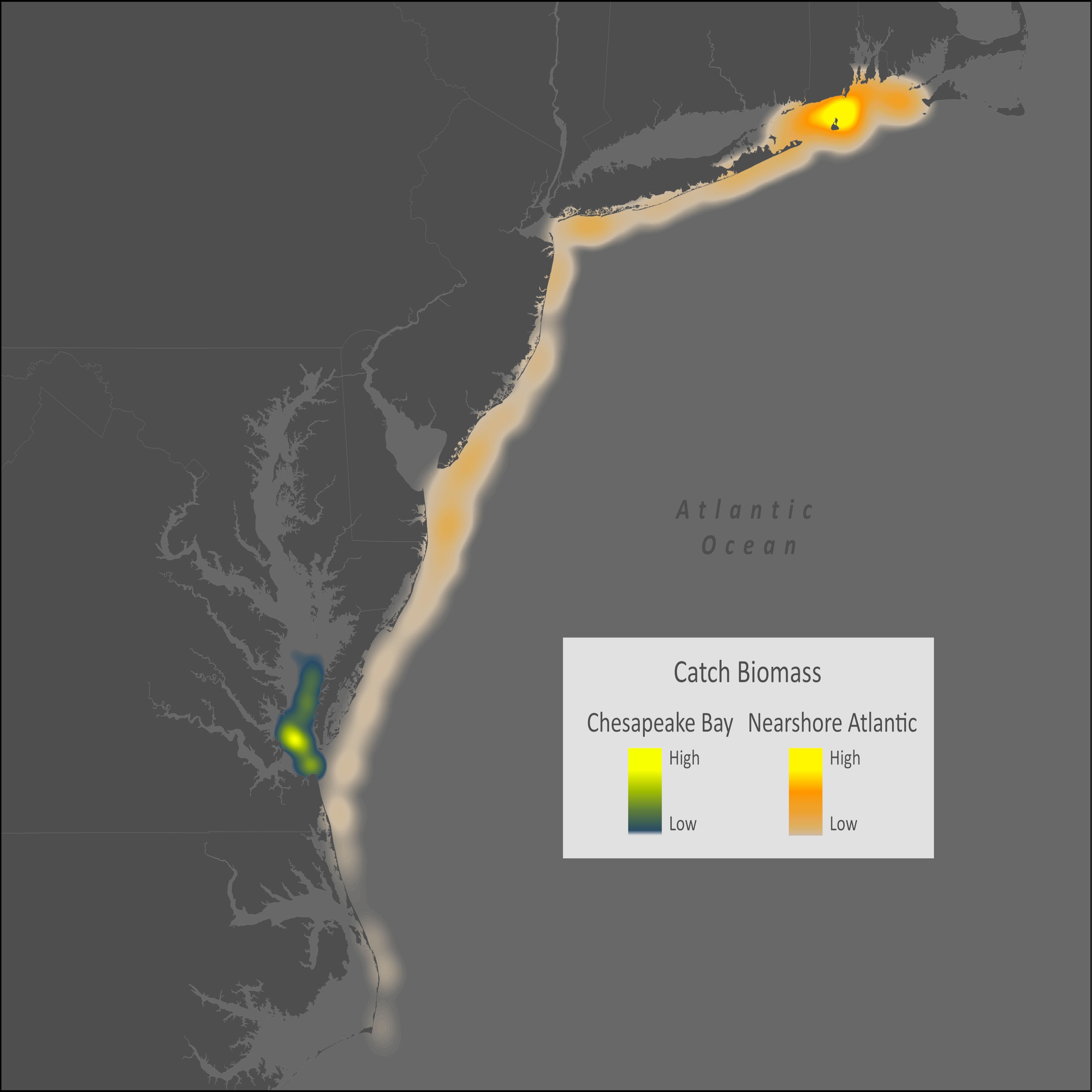Longfin Inshore Squid - Loligo pealeii
*Information from FAO Species Identification Guide Western Central Atlantic*

Size
Maximum: 47 cm mantle length (male); males grow larger than females; sizes in Western Central Atlantic are considerably smaller than in northern waters - males: 30 cm maximum, less than 20 cm average; females: less than 13 cm mantle length.
|
Habitat, biology, and fisheries
Few data are available on biology of populations in the Western Central Atlantic. Optimum temperatures 10 to 14°C, minimum 8°C. North of Cape Hatteras there is a summer inshore-northerly spawning migration to shallow coastal and shelf waters, followed by an offshore-southerly retreat in autumn and winter to continental slopewaters; restricted in summer to surface and shallowwater, but from 28 to 366 m depth in winter (peak concentrations at 100 to 193 m); adults are found on the bottom during the day but leave the bottom at night, dispersing into the water column, and may appear at the surface (in summer or warm water). Eggs are laid in gelatinous finger-like strands, many of which are attached together in large masses (“sea mops”) to a solid substrate (rock, shells, shipwrecks) at depths from a few to 250 m; planktonic paralarvae and juveniles are abundant in surface waters. Food includes crustaceans (e.g. euphausids), fishes, and squids. Fished primarily north of Cape Hatteras. Caught principally by otter trawls and inshore trapnets. Catches occur in the northern Gulf of Mexico, Yucatán, Colombia and Venezuela. Reliable statistics
are unavailable because catch is not separated by species.
|
Distribution
Western Atlantic continental shelf and upper slope waters from Nova Scotia to Venezuela, including the Gulf of Mexico and the Caribbean Sea. Not occurring around islands, except as rare strays at islands close to continental shelf or slope.
|






